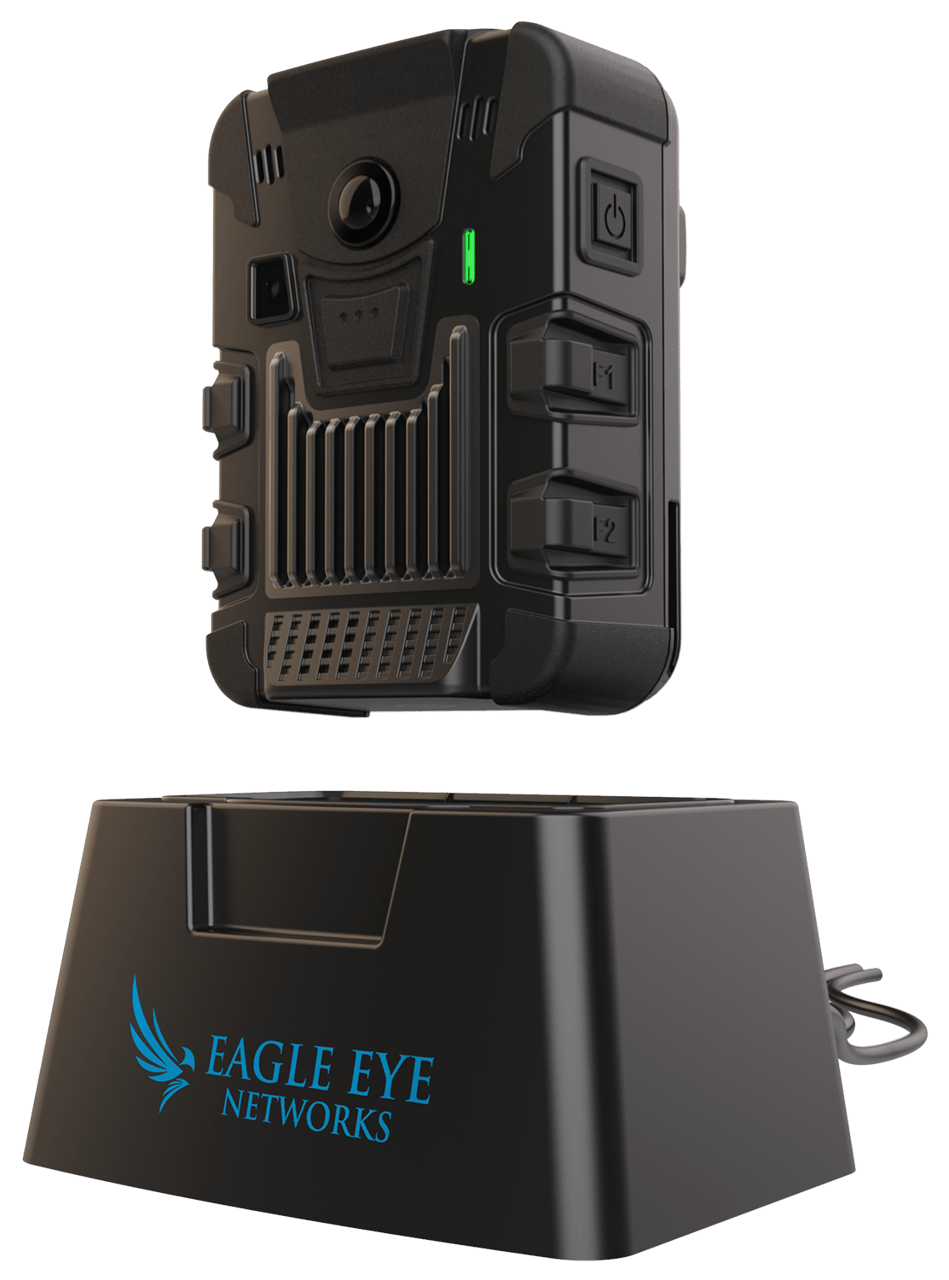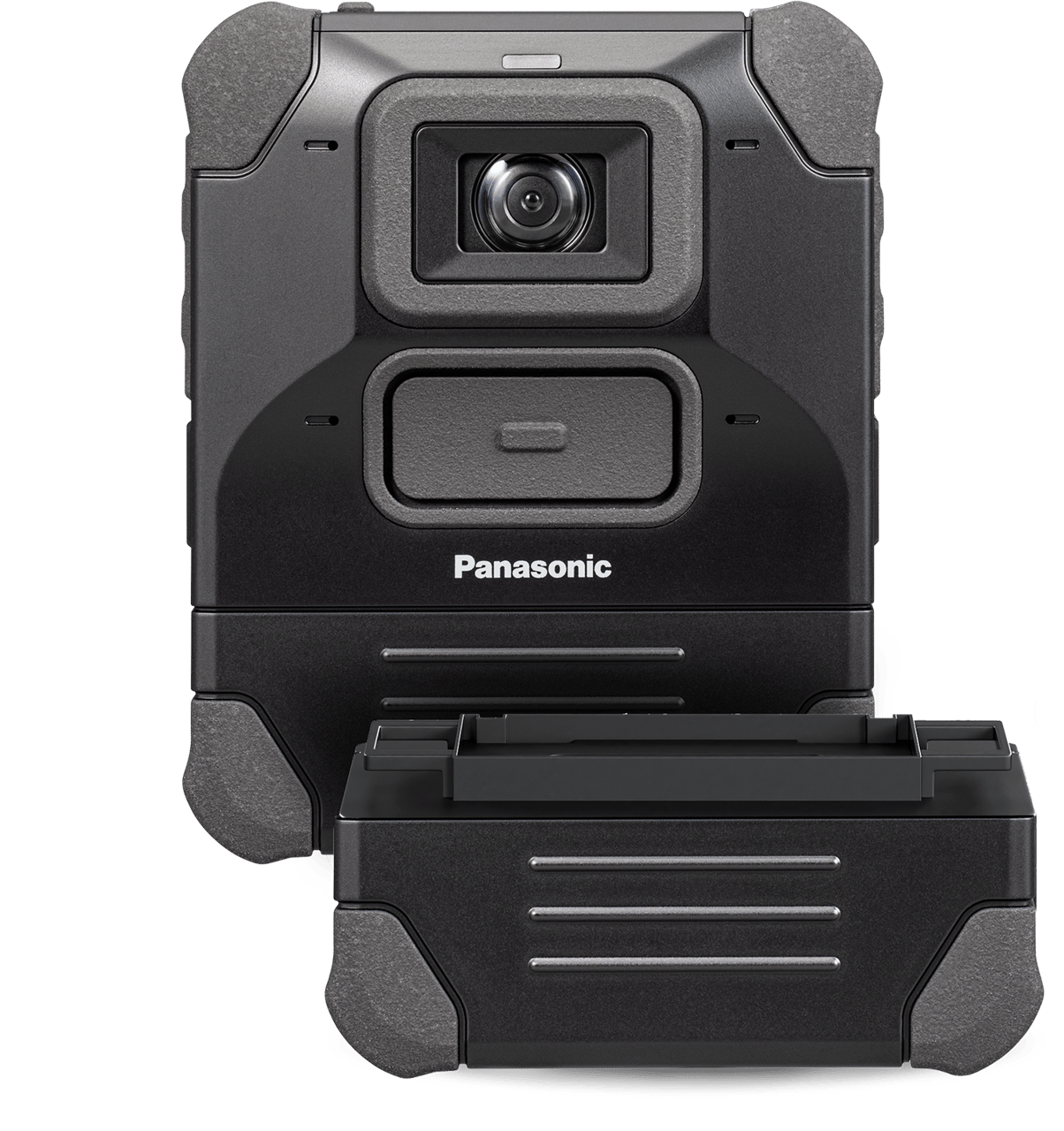// Video Surveillance

A New Era for
Body-Worn Cameras
Body-worn cameras like this one from Axis are increasingly being used by commercial clients from retail to restaurants to pharmacies.
IMAGE COURTESY OF AXIS COMMUNICATIONS
A New Era for
Body-Worn Cameras
Body-worn cameras present an exciting new revenue opportunity for security dealers and integrators.
By Anna Boudinot, SDM Contributing Writer
Body-worn cameras (BWCs) are no longer just for law enforcement and first responders. Today you can find nurses, delivery drivers, utility workers, and pharmacists wearing body cams in their day-to-day work.
An August 2021 report from 360 Research showed that the global body-worn camera market was valued at $1.62 billion in 2020 and is expected to reach $424.63 billion by 2026. Security dealers and integrators who want to seize the opportunity for new revenue streams through BWCs should understand not only the technology, but also the unique benefits these cameras provide. From supporting customer service to reducing liability, body-worn cameras provide valuable data to end users like no other device can.
Market Opportunity
Today’s BWC use cases come from expected industries as well as new adopters. Corporate security is the largest market opportunity for BWC, though it comes with its downsides, says Kaveh Malakuti, director of video product management, access control, and video services for Johnson Controls Global Products, Cork, Ireland. “Corporate security is an area where we’ll see a lot of competition: law enforcement is bound by a lot of regulations and requirements, while private sector requirements are not as strict. The threat here is manufacturers coming in and selling suboptimal solutions without taking cybersecurity and privacy into consideration.”
BWCs are an opportunity to enhance the quality of service provided by security firms — or any firm where customer relationships are crucial.
Dean Drako, founder and CEO of Austin, Texas’s Eagle Eye Networks, says that BWCs have a powerful effect of facilitating trust. “All kinds of service industries that interact with customers and want to encourage trust can benefit from body cams. Body cams provide a level of protection for the employee, the company, and the end customer — anywhere people are interacting with people.”
How Body-Worn Cameras Lead to RMR
BWCs provide new opportunities for recurring monthly revenue (RMR), strengthening cash flow for security dealers and integrators. We asked industry experts to share their ideas for RMR.
“Body-worn cameras provide integrators with yet another viable law enforcement and security solution that can be integrated with existing video surveillance system technologies. These devices can be sold with service contracts or leased, transforming their implementation from being a capital expense to a recurring operating expense, which is proving to be a favorable model for security professionals looking to optimize budget allocations.” — David O’Connor, director, public safety division, Panasonic i-PRO Sensing Solutions, Rolling Meadows, Ill.
“There is a definite opportunity for integrators to develop a RMR service model helping customers hone their expertise of BWCs — in terms of how they use the video, how they make it understandable and work through it in an efficient way. Integrators can help end users with training as well as developing SOPs and policies.” — Jennifer Elliott, Genetec
“Some RMR services can include onsite technical assistance and troubleshooting, bi-annual or annual system maintenance, regular system upgrades, potential software licenses, etc. Integrators can also offer their customers extended warranties. At the end of the day, a maintenance contract is most important because it provides for regular inspection and upkeep. As a result, the end customer will have the best possible experience and a system that operates at optimal efficiency.” — Kevin Taylor, Axis Communications
//
It’s no wonder, then, that the pandemic is responsible for BWC adoption as well, with niche uses for BWCs becoming more mainstream — think restaurant employees delivering curbside orders to customers in their cars, or store associates having to enforce mask mandates with customers who may be unhappy about this rule. The possibilities are endless. “Some healthcare institutions are using body-worn video to decrease violent incidents, assist with patient care, and enhance staff training. Department stores, grocery chains, and restaurants are using it to improve customer experience and provide record of liability claims,” says Kevin Taylor, segment development manager for smart cities at Axis Communications, Chelmsford, Mass. “Some online retailers and shipping companies are using body-worn cameras as a means of confirming package deliveries.” He also notes that BWCs can equip utility workers with a way to verify that repairs have been completed and help pharmaceutical workers document safe material handling.
Fletcher Pinkham, security integrator and president of Focus Tech in Santa Rosa, Calif., notes that highly regulated industries are prime candidates for BWCs. “In the legal cannabis industry, for example, BWCs can be used to clearly document the destruction of products that have not passed inspection or were contaminated. This is a requirement by the Bureau of Cannabis Control, and depending on the field-of-view of fixed security cameras, it can be difficult to clearly document this process and ensure compliance.”
Expanding Into Body Cams
Knowing which vertical markets can benefit the most from BWC technology is the first step. But how can integrators take the leap and add body-worn cameras to their product and service offerings?
The 4G direct-to-cloud body camera by Eagle Eye Networks is designed specifically for commercial use.
IMAGE COURTESY OF EAGLE EYE NETWORKS

Drako advises to start with current customers. “Dip your toe into the market with customers who are already using video surveillance, rather than looking for a customer who’s just looking for body-worn,” he says. “Creating holistic solutions between fixed IP cameras and body cams will encourage adoption with the end customer and make it possible for them to experiment with security solutions that may not have been feasible in the past.”
Better and more affordable technology makes today’s cameras a far cry from the BWCs introduced in the early 2000s. Cloud technology, data encryption, 4G and Wi-Fi capabilities, and geo-tagging are some of the features that have made the technology more dependable and user friendly.
“The integrator is the bridge for customers to experience this technology,” Malakuti says. “Consider questions like, ‘How can they expand beyond locations?’ ‘How can I manage all of it beyond the central locations?’ ‘How can the end user manage it?’ ‘What happens when I press this button?’ and ‘How can I configure what happens when I press this button?’ Have these kinds of thought-provoking conversations with your customer and present the answers to these questions as value-adds to them.”
When choosing a BWC manufacturer, security integrators should consider products that integrate into their customers’ existing VMS. “This lets them leverage security investments they’ve already made,” Taylor says. “Such an integration lets them review video from their network cameras and their body-worn cameras all in one place. Integrators should also look for scalable solutions so they can continue to grow the system and provide support as their customers’ needs change.”
Cybersecurity Considerations
Safeguarding data collected from the cameras is crucial to deploying a body-worn system. “Body-worn cameras capture voices and faces of people up close,” cautions Kaveh Malakuti of Johnson Controls. “That’s very important biometric information — you’ll never be able to change that.”
Remember that cybersecurity involves the full solution stack: a vulnerability on any piece of hardware or software could threaten the privacy of your data. Make sure your appliances are updated with the latest firmware and that physical security is in place to protect the appliances themselves. Look for manufacturers who build cybersecurity functionality into the design of their products, such as encrypted video on the edge and in the cloud.
//
Cloud technology has proven to be another benefit to today’s BWC users, a much-welcomed development since the days a camera-wearer had to plug the camera into a docking station before footage could be downloaded or viewed.
Jaime Abad Valdenebro, CEO of Mexico City’s OmniCloud, has found success using 4G, direct-to-cloud BWCs in smart city applications. OmniCloud offers integrated physical security and IoT solutions. “The body cams provide extra protection for security guards and ensure that patrols are completed on time,” he explains. “4G is important because it gives the user live access to body camera video. This makes a cloud video surveillance system even more powerful, especially when the body cams are integrated with fixed IP cameras.”
Value-Adds & Misconceptions
Integrators looking to get into the BWC business should understand the value proposition the technology offers as well as the misconceptions it engenders. An easy selling point is the cameras’ potential to reduce liability.
“At the end of the day it is about liability,” says Michael Chiocca, customer success manager at Genetec, Montreal. A 30-year law enforcement veteran, he formerly worked at the Chicago Police Department and created their area technology centers. “For example, when a hospital security officer is confronted by a very anxious, emotional visitor, having a body-worn camera there to record what actually happened is great for liability purposess.”
In 2020, George Mason University’s Center for Evidence-Based Crime Policy presented their analysis of over 70 research studies on the effects of BWCs on human behavior. The studies centered on law enforcement and results were mixed: some agencies reported fewer complaints from civilians and fewer incidents of officers needing to use force. Other agencies reported no noticeable differences when officers were wearing BWCs.
Chiocca points out that regardless of human behavior, footage from body-worn cameras provides a third-party perspective of an incident. “Everyone has a cell phone. People can always upload that cell phone video clip in the way that promotes their version of the narrative, and the narrative can spiral out of control.
“I think we can all agree that, in the absence of video, when parties come up with two different things, all parties wish it was captured on video. With video and audio, the room for interpretation is much less — but there’s no guarantee. It tells the story the best it can.”
The Panasonic i-PRO BWC4000 features a 12-hour field-swappable battery.
Photo courtesy of Panasonic i-PRO Sensing Solutions Corporation of America

Malakuti agrees. “When heated exchanges or even physical altercations take place, if we eliminate a body-worn camera from the equation, there’s always finger pointing — who said what, when — before the cell phone video was captured. A body-worn camera captures all of it, from before the interaction occurred to the point it was resolved.”
Challenges of Body-Worn Cameras
Strapping a body-worn camera onto an employee and sending them out to do their job is only the first step in gathering useful data. Just as important is keeping that data organized and incorporating the right analytical tools to use it in the most efficient way.
“You have to make data consumable,” explains Jennifer Elliot, global director of channel and sales enablement at Genetec. “Once you get the video off of the camera and onto the appliance where you’re running the VMS, you have the power to run analytics. If you’re watching for wandering septuagenarians or someone in a blue sweatshirt, for example, you can train it to look for that through different types of deep learning and AI applications.”
Chiocca adds, “It has to be easy to collect and organize data. A huge issue with body-worn camera footage is searchability and how you can look for data afterward. Other decision makers need to look at the video and easily find associated video.”
As the body-worn camera market skyrockets in the next five years, security dealers and integrators on the lookout for new market opportunities and nontraditional use cases should have no problem convincing their customers of the value of BWCs, especially when the body cams are integrated with existing IP video surveillance systems.
“When used well, video data gives people the tools to make the right decisions,” Chiocca says. Body-worn cameras provide an unbiased view of what’s happening, right where it’s happening. SDM
